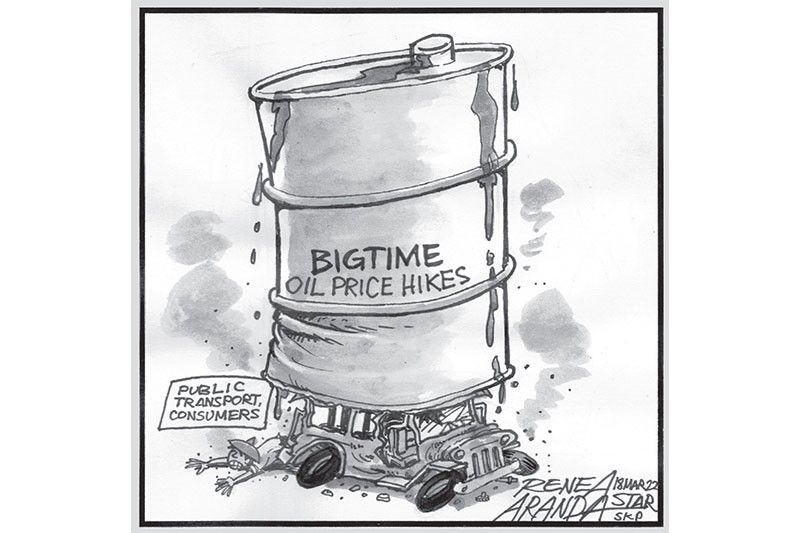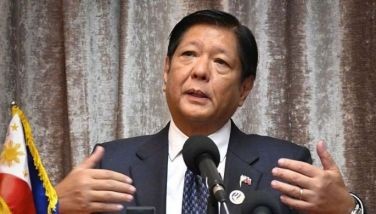EDITORIAL - Alternatives to oil

In looking for ways to ease the pain from surging fuel prices, the government can look at the aspects within its control. It can’t do anything about global crude oil prices, already rising as economies reopened amid the pandemic, and currently being pushed up by Russia’s invasion of Ukraine.
What is within its control are the taxes it collects: 12 percent value-added tax on petroleum imports, and excise taxes ranging from P3 to P10 per liter for various types of products, from liquefied petroleum gas to diesel and gasoline. But the government, whose tax base has drastically shrunk as businesses went bankrupt and millions went jobless or underemployed during the pandemic, can’t let go of the billions collected in fuel taxes.
Instead the government is opting for cash dole-outs to various sectors, from P200 a month to the poorest families, to P3,000 for corn farmers and fishermen and P6,500 for mass transport drivers. Many other sectors are still waiting for relief from the fuel surge.
At the same time, there are calls to return to a regulated oil pricing regime, under which the government maintained an Oil Price Stabilization Fund that reimbursed oil companies for additional costs in importing crude oil and petroleum products.
This being the height of the campaign season, however, a return to fuel regulation may have to wait until the next Congress. The President can call Congress to a special session, but lawmakers could instead authorize him to suspend the fuel excise tax at any time, without waiting for the three months of Dubai crude staying at $80 per barrel or higher, as stipulated in the Tax Reform for Acceleration and Inclusion or TRAIN Law.
If the government wants long-term measures against fuel price surges, it should provide more incentives for tapping alternative fuel to reduce the country’s dependence on fossil fuels. Not nuclear power; it is not true that it provides cheap energy. Until 2011, Japan relied on nuclear power for 30 percent of its energy needs, but the country had the most expensive electricity in Asia. After the catastrophic earthquake and tsunami on March 11, 2011 that caused a meltdown in its Fukushima nuclear reactor, Japan reduced to about two percent its reliance on nuclear power.
There are other alternative energy sources that the Philippines can tap, among them natural gas, hydropower, wind, solar and geothermal. With the archipelago dotted by volcanoes, surely it has large untapped sources of geothermal power. The world has been weaning itself away from fossil fuels; this crisis precipitated by the Russia-Ukraine war should give urgency to that effort.
- Latest
- Trending

























